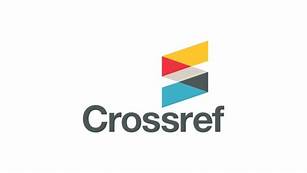About the Journal
Bangladesh Institute of Governance and Management (BIGM), a premier knowledge hub in Dhaka which conducts academic, research, training and intellectual capacity building activities on broad areas of governance and public policy discourse is publishing scholarly papers for its journal named 'BIGM Journal of Policy Analysis' following interdisciplinary perspectives and approaches in areas of public policy, developrnent, economics and adjacent fields. Papers that describe experimentation are earnestly encouraged.
Peer Review Process
- Reviewers should have knowledge about the topic and understanding of the context in which the work is carried out.
- Reviewers only accept texts according to their fields of expertise.
- Reviewers must be able to complete the review process on time.
- Maintain confidentiality about the existence and substance of the manuscript.
- Avoiding conflicts of interest (refusing to review texts in which he is involved)
Publication Frequency
BIGM Journal of Policy Analysis will be published semi anually.
Open Access Policy
This journal provides immediate open access to its content on the principle that making research freely available to the public supports a greater global exchange of knowledge.
Sponsors
BIGMSources of Support
BIGM
Journal History
Answering the needs and challenges in the public policy, developrnent, economics and adjacent fields. BIGM Journal of Policy Analysis provides a very useful research forum for stakeholders, policy makers, academics, researchers and the general public.
Structure of an Article
|
Research Title: |
Every research/study must have a title/name. It helps the reader get a clear idea about the subject. It is an important part of academic research and provides, in the shortest form, the core concepts of the proposed research. |
|
Introduction: |
This section discusses the subject or area of research. This includes knowledge about earlier research in the field, the basis of the theory, information/data that will be applied/used, areas that will be explored/statements of the problem/objectives, and rationale/requirements of the study. Also, the overall structure of the research proposal is laid out here. |
|
Review of Literature; |
This section discusses references to earlier research findings and methods on the subject. A literature review helps constitute the logical grounds for conducting research based on earlier findings, existing theories, concepts, and hypotheses. Mentioning recent research publications improves the quality of the review. |
|
Research Gap: |
This refers to the maiden area yet to be explored but identified based on the literature review and which the proposed research will attempt to explore. Identifying the research gap is crucial and forms the basis of the research. |
|
Objective of the Study: |
This is the statement of the questions/problems that need to be explored or the causes/causal effects of which will be attempted to be identified. |
|
Theoretical/Conceptual Framework: |
The theoretical and logical basis of conducting any research. The theoretical framework of research/study is formulated based on the field's existing theories/research findings. A conceptual framework is the inter-relational mapping of the variables of the concept, which gives an idea of the expected conclusion/findings of the study. |
|
Formulation of Hypothesis: |
The statement of the research question that is to be investigated, and which proposes the expected result. |
|
The rationale of the Study: |
This expresses the significance and uniqueness of the study. It is established based on the literature review. |
|
Methodology of the Study: |
This involves the method or methods used to undertake the study and the theories and principles that will be leveraged to develop an approach that matches the research objectives. |
|
Result/ Output: |
It is the result that has been found by conducting research. It helps to establish the significance of a study. |
|
Discussion |
In this section, the results are interpreted through a concise summary of the study's principal findings. Furthermore, an analysis of the results' implications and their relevance to the research question or hypothesis is provided. Furthermore, results are compared to those of prior research in the field in this section. |
|
Relation with Public Policy Formulation: |
This is the contribution of the research findings to formulating public policy. |
|
Conclusion and Future Direction |
This part involves summarizing the main points of the article and restating the overall significance of the findings. Future direction suggests areas for future research based on the limitations and unanswered questions raised by the study. |
|
Bibliography/References: |
This list of existing literature referred to in the study establishes the proposal as reliable and authentic. Only the references being quoted will be under this section. |





